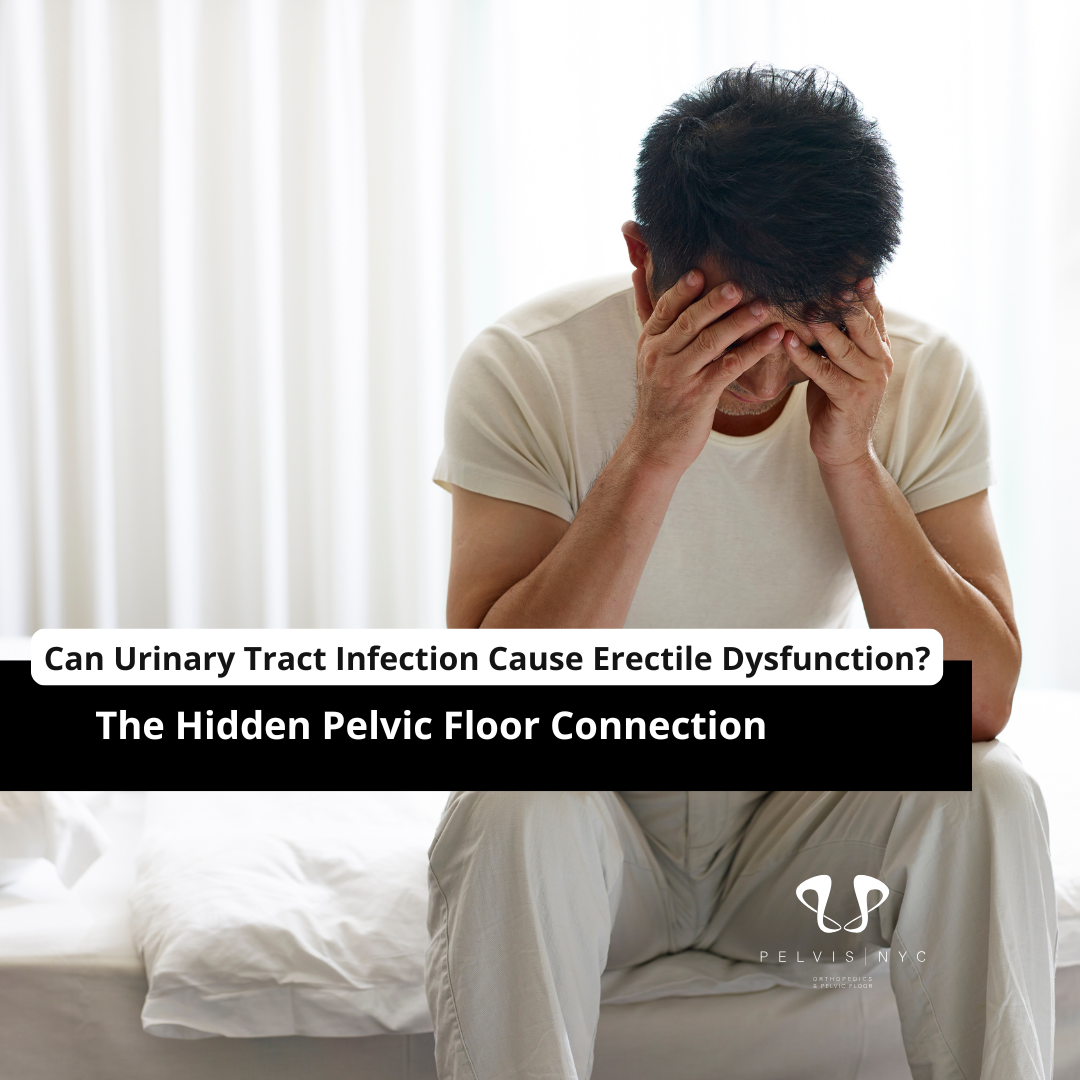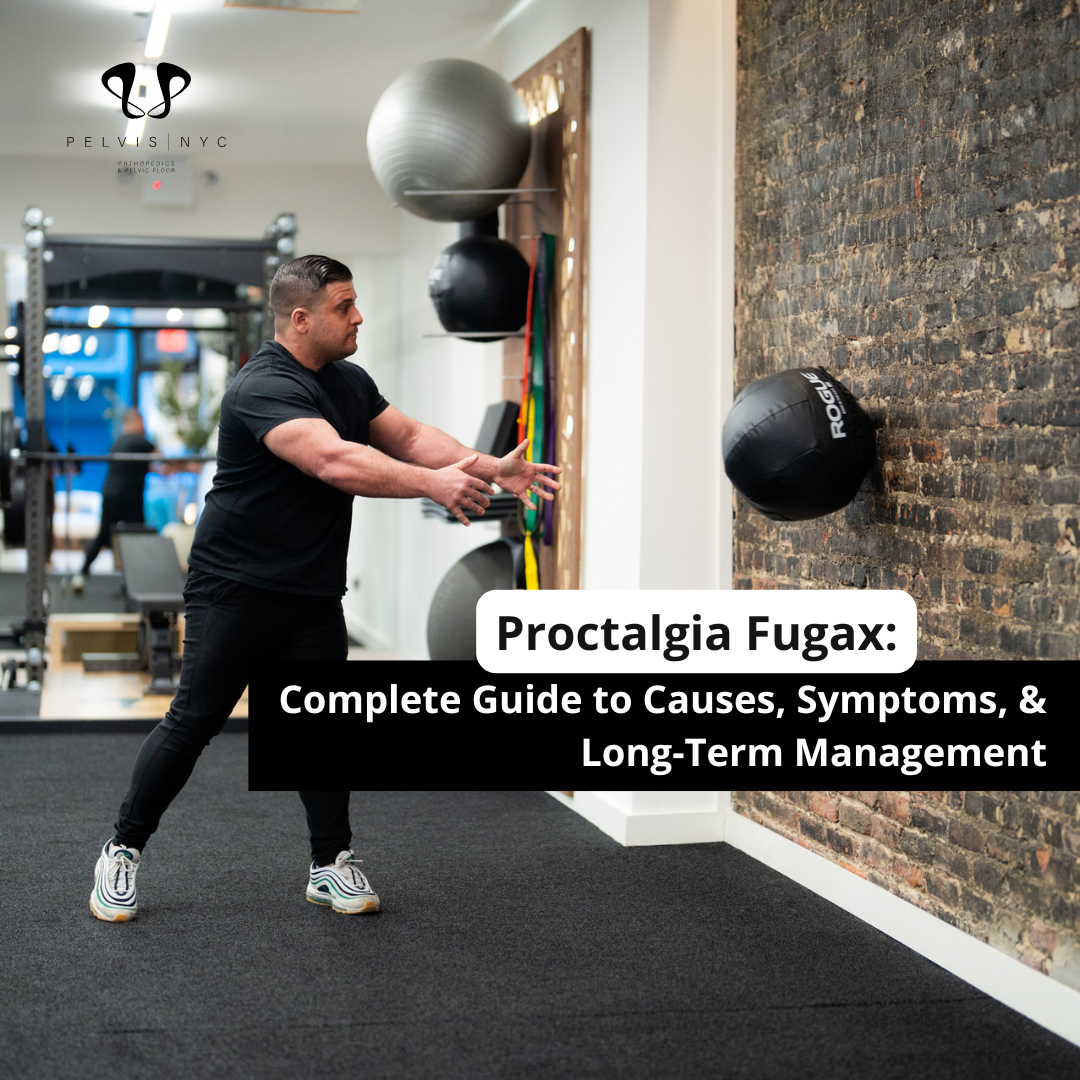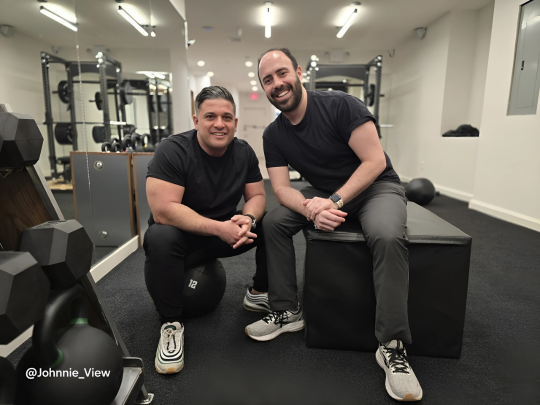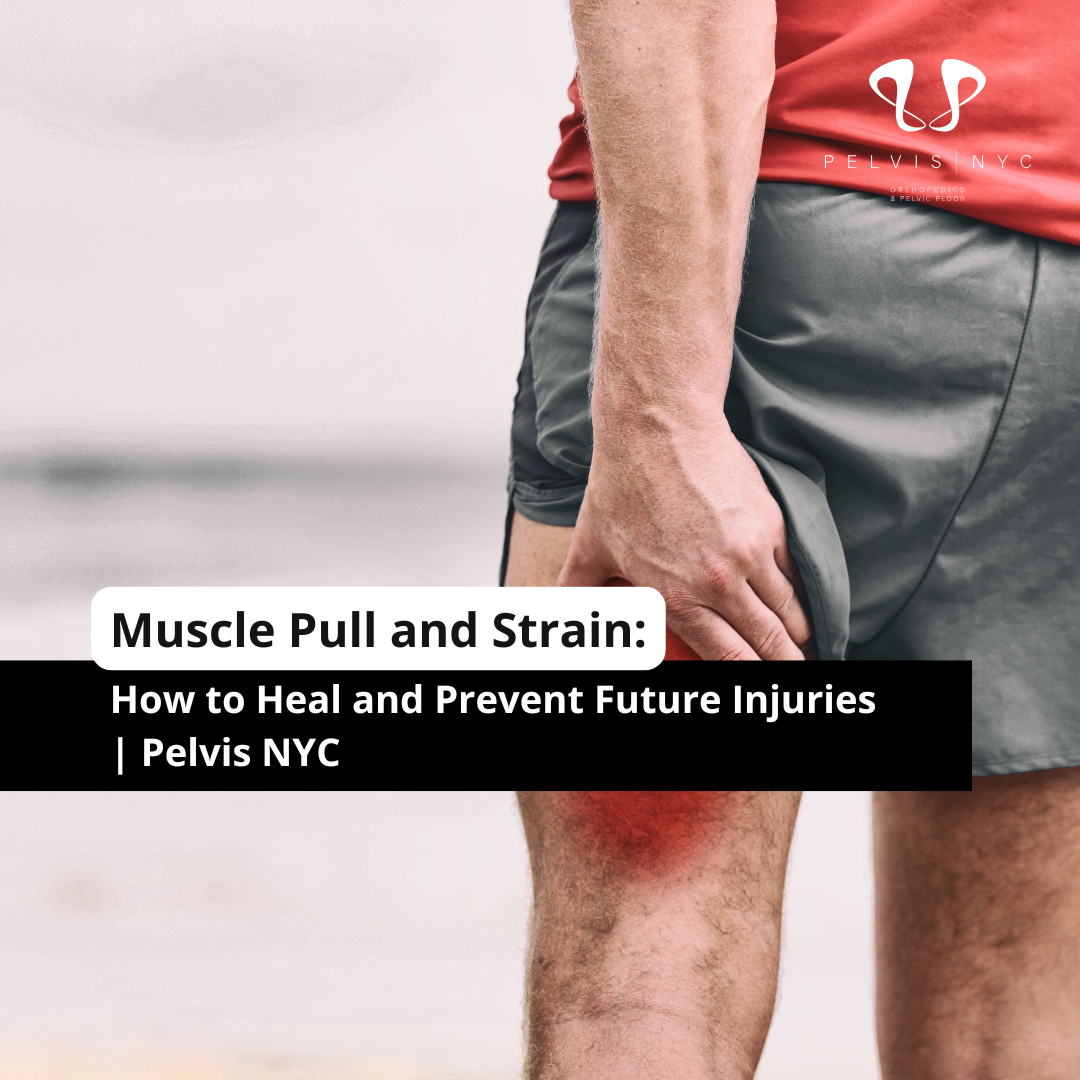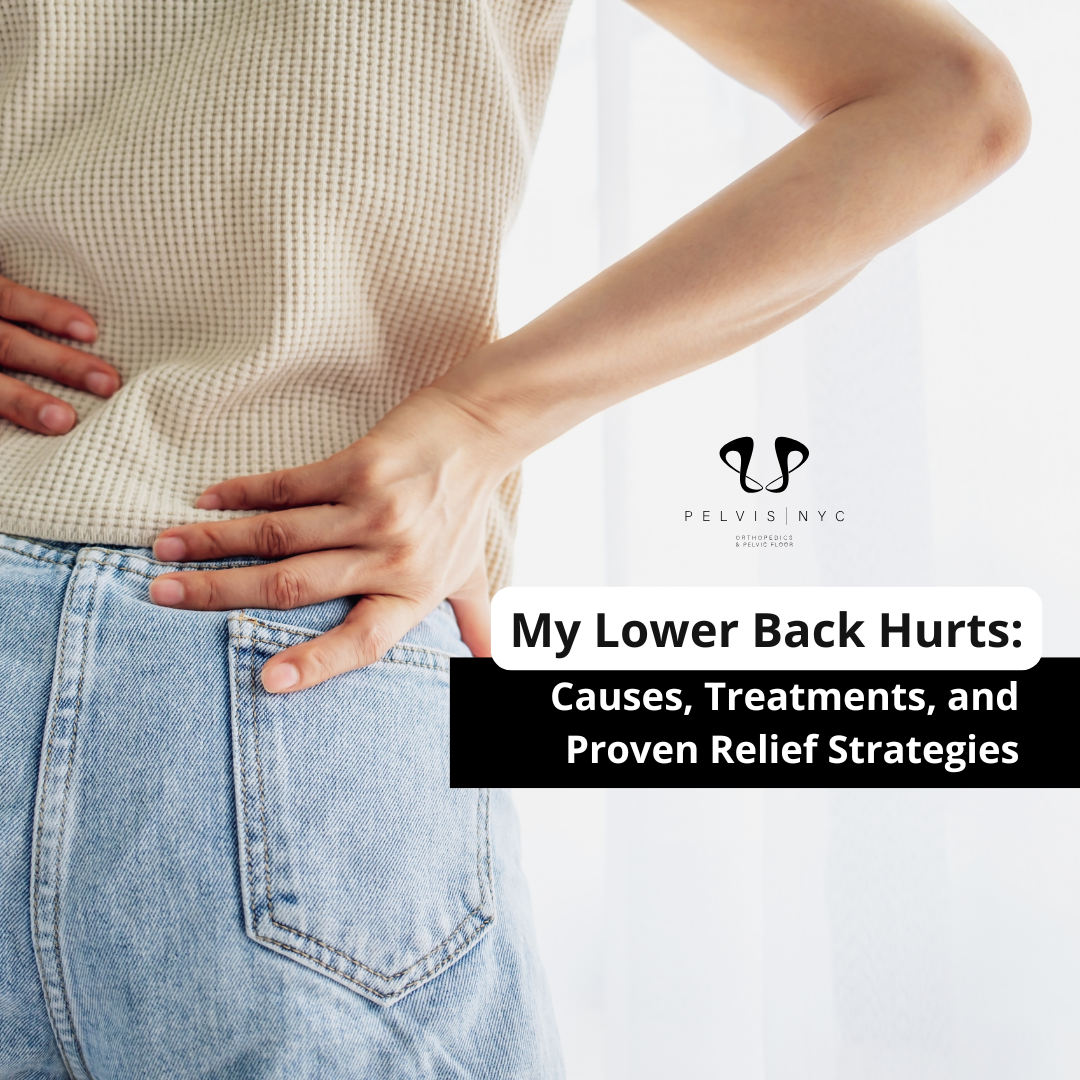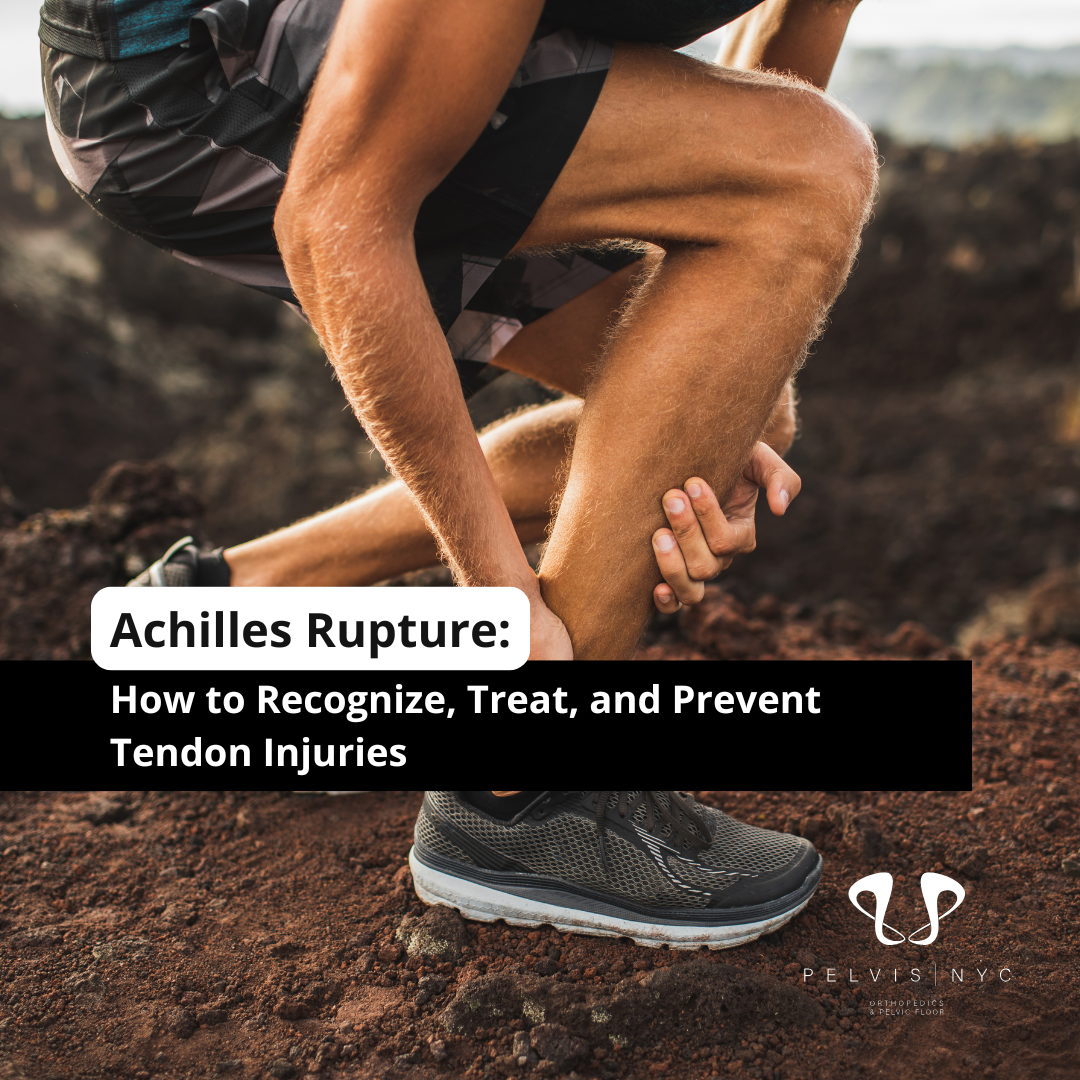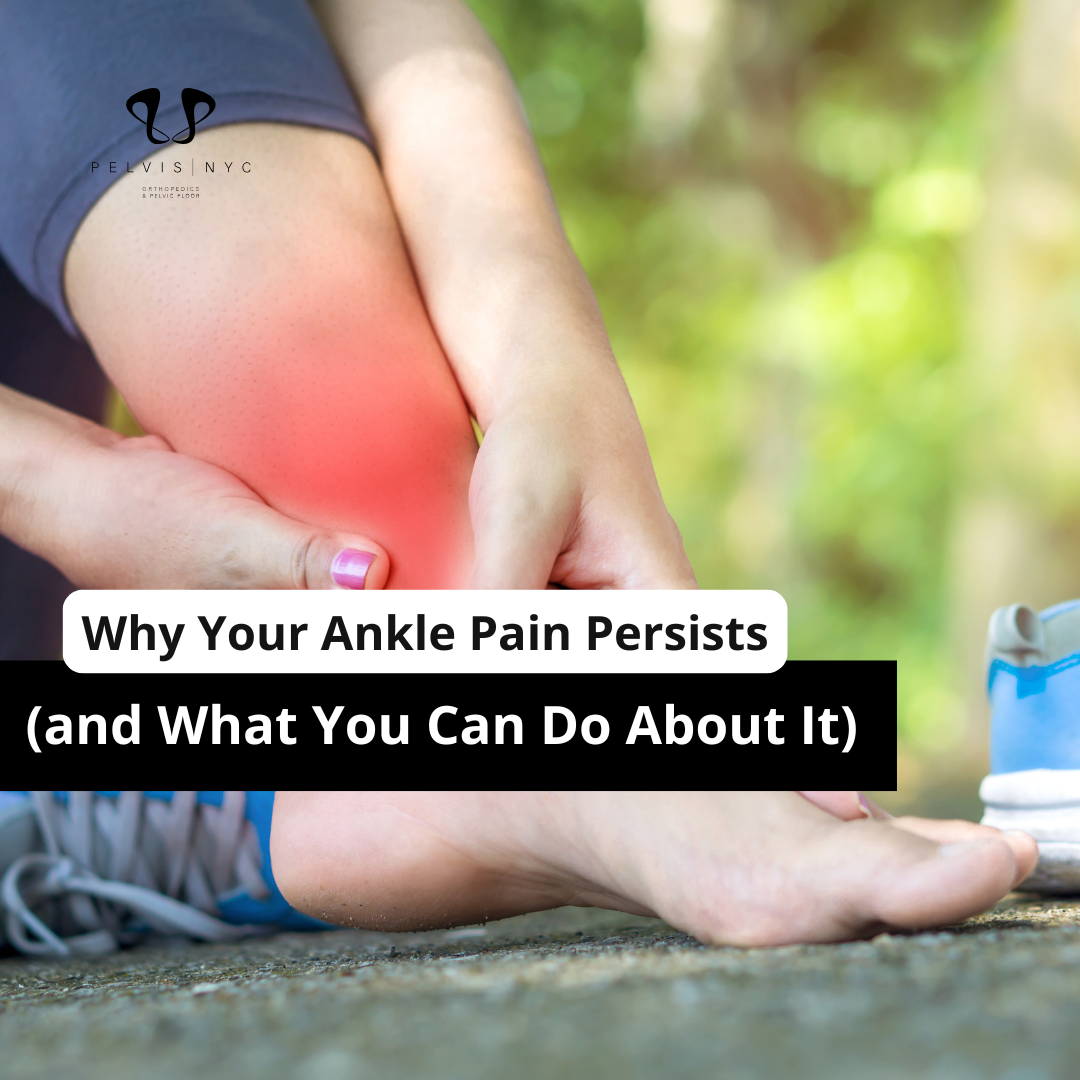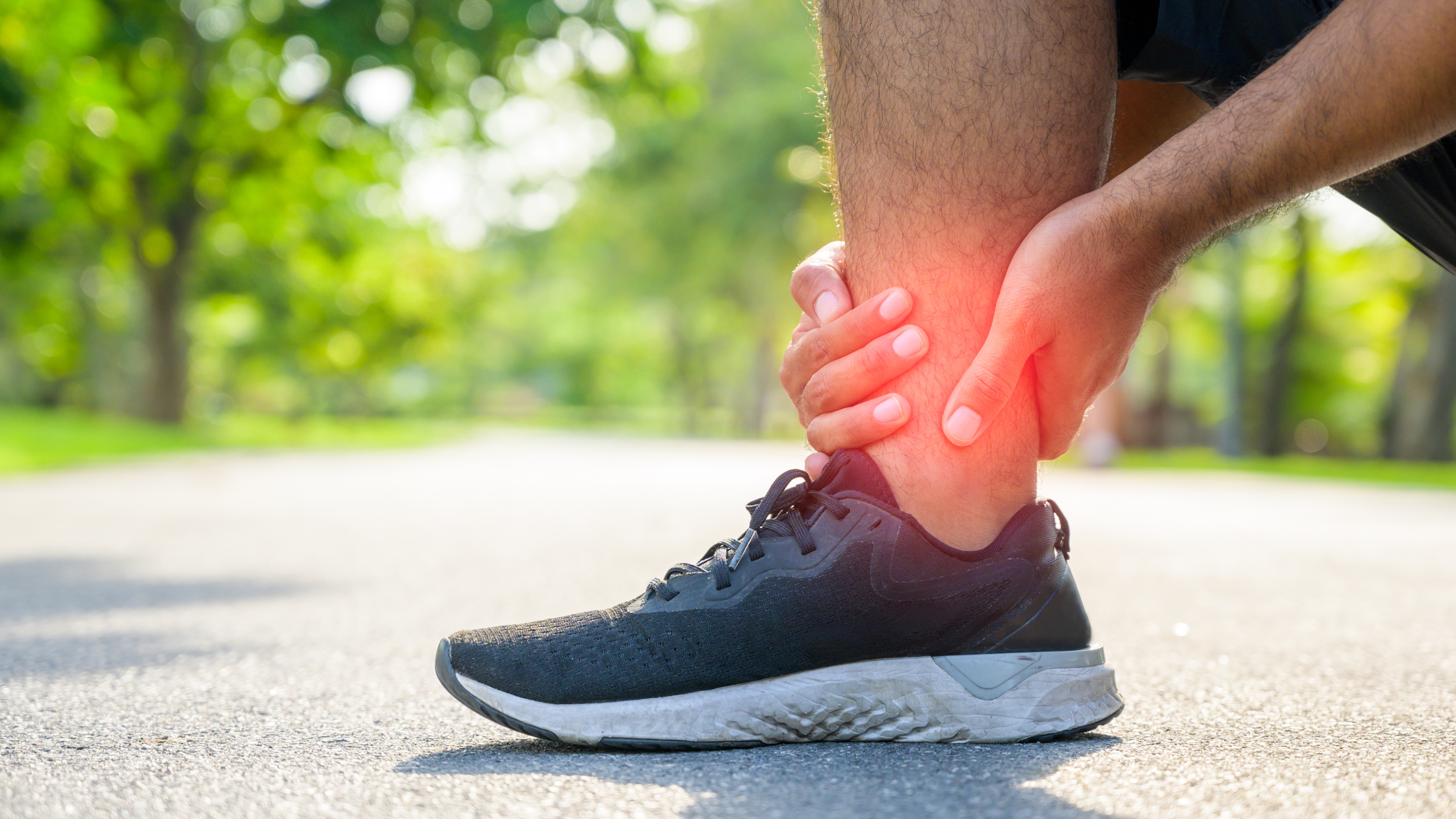Yes—a urinary tract infection can cause erectile dysfunction, especially when it leads to pelvic floor muscle tightness, nerve irritation, inflammation, and disrupted blood flow. From a physical therapist’s point of view, many cases of post-infection erectile dysfunction are mechanical and reversible, not permanent vascular failure.
While UTIs do not always directly cause erectile dysfunction, they can indirectly affect sexual performance by causing inflammation, discomfort, and other factors that may interfere with erections.
This guide explains exactly how that happens, which men are at risk, and what truly restores erectile function—not just temporarily, but at the root cause.
Introduction to Erectile Dysfunction

Erectile dysfunction (ED) is one of the most common forms of male sexual dysfunction, defined as the consistent inability to achieve or maintain an erection firm enough for satisfactory sexual performance. Affecting more than 30 million men in the United States alone, erectile dysfunction becomes increasingly prevalent with age, but it can impact men at any stage of life. The effects of ED go beyond the bedroom—this condition can significantly lower self-esteem, strain intimate relationships, and reduce overall quality of life.
The causes of erectile dysfunction are often complex and multifactorial. Vascular disease, high blood pressure, and diabetes can all impair blood flow to the penis, while psychological factors such as stress, anxiety, and depression can further disrupt sexual function. In some cases, ED may be an early warning sign of underlying health issues, including cardiovascular disease. Because erectile dysfunction can result from a combination of physical and psychological factors, understanding its root causes is essential for effective treatment and long-term management. In this article, we’ll explore how ED develops, its impact on men’s lives, and why a holistic approach is key to restoring sexual health and performance.
Why This Article Is Written From a Physical Therapist’s Perspective
Most articles answering “Can urinary tract infection cause erectile dysfunction?” focus on medications, hormones, or psychological explanations. As a pelvic health physical therapist, I see a different driver every day in the clinic:
- Pelvic floor muscle spasm
- Nerve compression
- Restricted circulation
- Protective movement patterns
- Post-infection guarding
These physical changes alone can fully explain erectile problems—even in young, otherwise healthy men.
Understanding UTIs in Men and Why They Affect Erectile Function
A urinary tract infection (UTI) in men commonly involves the:
- Bladder (the bladder stores urine until it is ready to be expelled, playing a key role in the urinary system)
- Prostate
- Urethra
- Pelvic floor support system
When infection enters this region, the nervous system activates a protective muscle tightening response. This keeps you safe short-term—but when it doesn’t shut off, it disrupts normal sexual mechanics.
Common UTI Symptoms That Physically Interfere With Erections
If you experience symptoms such as those listed below, it is important to seek medical advice promptly.
- Frequent urination
- Urinary urgency
- Burning with urination
- Pelvic pressure
- Testicular discomfort
- Pain with ejaculation
- Weak or inconsistent erections
Every one of these symptoms is governed by the pelvic nerves and pelvic floor muscles, which also control erection quality.
Can Urinary Tract Infection Cause Erectile Dysfunction Through Mechanical and Neurological Pathways?
✅ H2: Can Urinary Tract Infection Cause Erectile Dysfunction by Disrupting Pelvic Floor Function and Blood Flow?
An erection requires:
- Healthy arterial blood flow—erections depend on mechanisms that increase blood flow to the penis
- Intact nerve signaling
- Relaxation of penile smooth muscle
- Compression of venous outflow
- Coordinated pelvic floor activation
A UTI can disrupt every step of that process.
1. Pelvic Floor Muscle Spasm Blocks Erectile Blood Flow
UTI-related pain triggers automatic tightening of the pelvic floor muscles. When those muscles remain hypertonic:
- Arteries feeding the penis can be compressed
- Venous blood leaks out too quickly
- Erections become weak or fade rapidly
This is one of the most common physical reasons a urinary tract infection can cause erectile dysfunction even after the infection clears.
2. Nerve Irritation Disrupts Sexual Signaling
UTIs often irritate nerves in the pelvic region, including:
- Pudendal nerve
- Hypogastric plexus
- Sacral nerve roots
These nerves control:
- Arousal response
- Penile sensation
- Erection sustainability
- Ejaculation timing
When sensitized, erection quality becomes unreliable.
3. Chronic Guarding Reduces Penile Blood Flow
Muscle guarding compresses:
- Internal pudendal arteries
- Cavernosal arteries
This reduces oxygen delivery to erectile tissue. The encouraging news: this form of blood flow restriction is reversible with physical therapy.
Lower Urinary Tract Symptoms Are Strongly Linked to Erectile Dysfunction
✅ H2: Lower Urinary Tract Symptoms, Frequent Urination, and Why They Often Cause Erectile Dysfunction
Lower urinary tract symptoms (LUTS) include:
- Weak urine stream
- Incomplete emptying
- Urinary urgency
- Nocturia
- Frequent urination
Overactive bladder is a common cause of these symptoms and is frequently associated with erectile dysfunction.
From a physical therapy standpoint, LUTS nearly always reflect:
- Pelvic floor overactivity
- Poor pressure regulation
- Impaired bladder–pelvic coordination
Clinical research in the Journal of Sexual Medicine shows men with LUTS are over twice as likely to experience erectile dysfunction, even after adjusting for age and cardiovascular risk.
Can an Enlarged Prostate and Benign Prostatic Hyperplasia Cause Erectile Dysfunction?
✅ H2: Can Benign Prostatic Hyperplasia and an Enlarged Prostate Cause Erectile Dysfunction?
Benign prostatic hyperplasia (BPH)—or enlarged prostate—directly alters pelvic mechanics by:
- Increasing outlet resistance at the bladder
- Altering pelvic blood vessel routing
- Increasing local inflammation
BPH can also cause urinary retention and urinary incontinence by increasing pressure on the bladder and urethra. Chronic BPH may lead to thickening of the bladder wall, which further weakens bladder function.
From a rehab perspective, BPH creates:
- Chronic pelvic congestion
- Constant pelvic floor overuse
- Reduced erectile firmness
- Difficulty sustaining erections
While BPH doesn’t directly damage erections, its mechanical effects frequently cause erectile dysfunction indirectly.
Health Conditions and ED: Other Factors That Can Impact Erectile Function
Erectile function is closely linked to overall health, and a variety of medical conditions can increase the risk of developing erectile dysfunction. Lower urinary tract symptoms (LUTS), such as frequent urination, urgency, and nocturia, are often associated with conditions like benign prostatic hyperplasia (BPH), prostate cancer, and urinary tract infections (UTIs). These urinary tract issues can cause discomfort, burning sensation, and pelvic pain, all of which may interfere with sexual function and reduce sexual desire.
Beyond the urinary tract, other health conditions can also play a significant role in male sexual dysfunction. High blood pressure, diabetes, and metabolic syndrome can damage blood vessels and nerves, making it more difficult to achieve or maintain an erection. Spinal cord injuries and nerve damage—whether from trauma, surgery, or chronic illness—can disrupt the signals necessary for erectile function. Certain medications, including those used to treat high blood pressure or depression, may also contribute to ED.
Because so many factors can affect sexual health, it’s important to work closely with a healthcare provider to identify and address any underlying health conditions. Early intervention and regular check-ups can help prevent long-term complications and improve treatment outcomes. By understanding the connection between overall health and erectile function, men can take proactive steps to protect their sexual health, improve their quality of life, and maintain satisfying intimate relationships.
Why Erectile Dysfunction Can Persist After the Infection Is Gone
From the clinic, this is a weekly occurrence:
- The bacteria clear
- The pain stops
- But erections remain weak or inconsistent
Why? Because the body learned a protective motor pattern during the infection—and never released it.
This includes:
- Persistent pelvic tension
- Low-grade nerve hypersensitivity
- Guarded breathing patterns
- Fear-based sexual response
Ongoing erectile dysfunction can also lead to psychological distress, which may further complicate recovery.
All of these suppress erectile reflexes.
Can Urinary Tract Infection Cause Erectile Dysfunction in Younger Men?
Yes—and physical therapists see this often in men aged 18–35. The most common triggers include:
- Dehydration
- Delayed urination
- High caffeine intake
- Long cycling sessions
- High physical stress
- Post-workout sexual activity without hydration
Some younger men may also experience premature ejaculation alongside erectile dysfunction following a UTI.
The younger the man, the more likely the ED is mechanical and fully reversible.
Natural Remedies and Lifestyle Changes That Restore Erections After a UTI
✅ H2: Natural Remedies and Lifestyle Changes to Reverse Erectile Problems After a UTI
These strategies restore normal mechanics and circulation:
- Drink plenty of water to flush bacteria from the urinary tract.
- Eat a balanced diet rich in fruits, vegetables, and whole grains to support immune function.
- Get regular exercise to improve blood flow and reduce stress.
- Avoid smoking and limit alcohol, as both can worsen erectile dysfunction.
- Practice good hygiene to prevent future infections.
Supporting mental health is also crucial during recovery from post-UTI erectile dysfunction, as issues like stress, anxiety, or depression can contribute to ED and impact overall well-being.
Pelvic-Focused Natural Remedies
- Pelvic floor down-training (not Kegels)
- Diaphragmatic breathing drills
- Hip mobility and spine decompression
- Abdominal wall release
- Glute and deep core strengthening
These exercises can also help reduce overactive bladder symptoms, which often accompany urinary tract infections.
Lifestyle Changes That Improve Erectile Function
- Walking improves pelvic circulation
- Strength training boosts nitric oxide
- Proper hydration reduces urinary irritation
- 7–9 hours of sleep restores testosterone
Maintaining healthy blood sugar levels is also important, as high blood sugar increases the risk of urinary tract infections and erectile dysfunction.
Clinical recovery timelines show measurable erectile improvement in 4–8 weeks when these patterns are restored.
ED Treatments That Work Best After a UTI (With Physical Therapy)
✅ H2: ED Treatments for Persistent Erectile Dysfunction After a Urinary Tract Infection
| ED Treatment | Works Best When Combined With |
| Viagra / Cialis | Pelvic floor relaxation |
| Shockwave Therapy | Blood flow retraining |
| Pelvic Floor PT | Hip and core stabilization |
| Testosterone Therapy | Only if labs confirm deficiency |
| Counseling | Performance anxiety reset |

From a rehabilitation point of view: Medication opens the door—but mechanics keep it open.
For comprehensive and personalized treatment plans, it is important to consult medical professionals who can assess your individual needs and guide you through the most effective options.
Case Pattern Seen in Pelvic Health Clinics
A healthy 31-year-old with no significant prior medical history of urinary or sexual health issues develops a UTI after intense training and dehydration. After antibiotics:
- Pain resolves
- Urinary urgency improves
- Erections remain weak
Pelvic exam shows:
- Hypertonic pelvic floor
- Limited diaphragmatic movement
- Pudendal nerve irritation
After 6 weeks of pelvic physical therapy:
- Erections normalize
- Urinary urgency disappears
- Sexual confidence fully returns
This pattern is incredibly common.
Where to Get Specialized Pelvic Treatment in NYC
✅ Ready to Treat the Root Cause of UTI-Related Erectile Dysfunction?
If you’re asking, “Can urinary tract infection cause erectile dysfunction—and why hasn’t mine resolved?”, the answer is often pelvic floor dysfunction.
Pelvis NYC is a specialized pelvic health physical therapy clinic dedicated to treating:
- Post-UTI erectile dysfunction
- Pelvic floor tightness and nerve compression
- Prostatitis-related sexual dysfunction
- Lower urinary tract symptoms
- Chronic pelvic pain and performance anxiety
Our licensed pelvic health specialists use evidence-based physical therapy—not guesswork—to restore blood flow, nerve function, and erectile control.
👉 Visit Pelvis NYC to schedule your pelvic health evaluation today. Early treatment and early diagnosis of urinary and sexual health issues lead to faster, full recovery and better treatment outcomes.
How to Prevent UTIs From Triggering Erectile Dysfunction in the Future
- Hydrate consistently
- Don’t delay urination
- Manage constipation
- Avoid prolonged pelvic compression
- Strengthen hips and deep core
- Address urinary symptoms early
Preventing urinary infections is key to reducing the risk of post-infection erectile dysfunction.
Key Takeaways From a Physical Therapist
- Yes, a urinary tract infection can cause erectile dysfunction.
- The most common drivers are pelvic muscle spasm, nerve irritation, and restricted blood flow.
- LUTS, BPH, and enlarged prostate significantly increase risk.
- Recognizing and addressing risk factors such as diabetes, prostate problems, inflammation, and lifestyle choices is crucial for preventing and managing both urinary tract infections and erectile dysfunction.
- Post-infection erectile dysfunction is highly reversible with proper pelvic rehabilitation.
- ED medications work best when combined with physical therapy.
FAQs: “Can Urinary Tract Infection Cause Erectile Dysfunction?”
Q1: Can urinary tract infection cause erectile dysfunction permanently?
No. In most cases, it is temporary and reversible with proper treatment. However, men with common risk factors such as diabetes or high blood pressure may be at higher risk for persistent symptoms.
Q2: How long does erectile dysfunction last after a UTI?
Most men recover within 2–6 weeks depending on pelvic tension and nerve recovery.
Q3: Does frequent urination cause erectile dysfunction?
Yes. Frequent urination is a key LUTS sign strongly linked to ED.
Q4: Can an enlarged prostate cause erectile dysfunction?
Yes, indirectly through urinary obstruction, inflammation, and blood flow changes.
The prostate plays a crucial role in both urinary and sexual health, so issues affecting the prostate can impact erectile function as well as urination.
Q5: Are natural remedies enough to restore erections after a UTI?
They support recovery, but many men need pelvic physical therapy for full resolution. Addressing mental health issues, such as depression, anxiety, and stress, is also important for full recovery from erectile dysfunction.
Q6: Should I see a pelvic physical therapist for ED after a UTI?
Yes—especially if erections haven’t normalized within one month of infection clearance.

